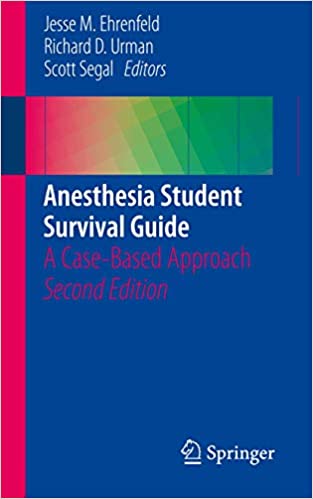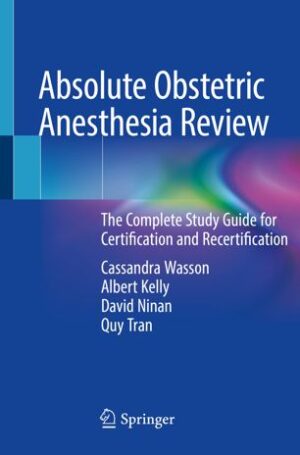Description
The “Anesthesia Student Survival Guide: A Case-Based Approach, 2nd Edition” is a resource designed to provide essential information and practical guidance to students pursuing a career in anesthesiology. This guide takes a case-based approach, using clinical scenarios and cases to help students develop their understanding of anesthesia principles and practices. Here’s an overview of what you can expect from the 2nd edition of this guide:
1. Case-Based Learning:
- The guide uses clinical cases and scenarios to facilitate active learning. These cases often represent real-life situations that anesthesia students may encounter.
2. Core Anesthesia Principles:
- It covers fundamental anesthesia principles, including anesthesia techniques, monitoring, drug administration, and perioperative care.
3. Clinical Scenarios:
- The guide presents a variety of clinical scenarios to help students develop problem-solving skills and apply their knowledge to different patient situations.
4. Patient Assessment:
- It includes guidance on patient assessment, preoperative evaluation, and the formulation of an anesthetic plan.
5. Anesthetic Techniques:
- Different anesthetic techniques are discussed within the context of specific cases. Students can learn how to choose and implement the appropriate technique for a given scenario.
6. Monitoring and Assessment:
- Continuous monitoring, vital sign assessment, and the interpretation of monitoring data are key components, as they play a critical role in patient safety.
7. Drug Administration:
- Information about the administration of anesthetic drugs, including dosages, indications, and potential side effects, is included.
8. Perioperative Care:
- Perioperative care is highlighted, covering the preoperative, intraoperative, and postoperative phases, and addressing potential challenges and complications.
9. Emergency Situations:
- Guidance on managing common and critical emergency situations during anesthesia is provided, helping students prepare for unexpected events.
10. Multidisciplinary Approach: – Anesthesia often requires collaboration with other healthcare professionals. The guide may emphasize the importance of teamwork and communication.
11. Practical Tips and Pearls: – Practical tips, clinical pearls, and best practices are likely to be included, offering insights to enhance the quality of care.
12. Real-World Application: – The guide focuses on real-world application, bridging the gap between theory and clinical practice.
13. Updates and Advances: – The 2nd edition may incorporate the latest advances in the field of anesthesiology, reflecting new techniques, guidelines, and technologies.
The “Anesthesia Student Survival Guide: A Case-Based Approach, 2nd Edition” is a valuable resource for anesthesia students as it allows them to actively engage with anesthesia concepts through practical cases. It helps prepare students for the challenges and responsibilities of anesthesia practice by building problem-solving skills and clinical reasoning. This approach is particularly useful in bridging the gap between didactic learning and real-world application.





Reviews
There are no reviews yet.